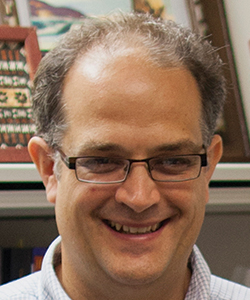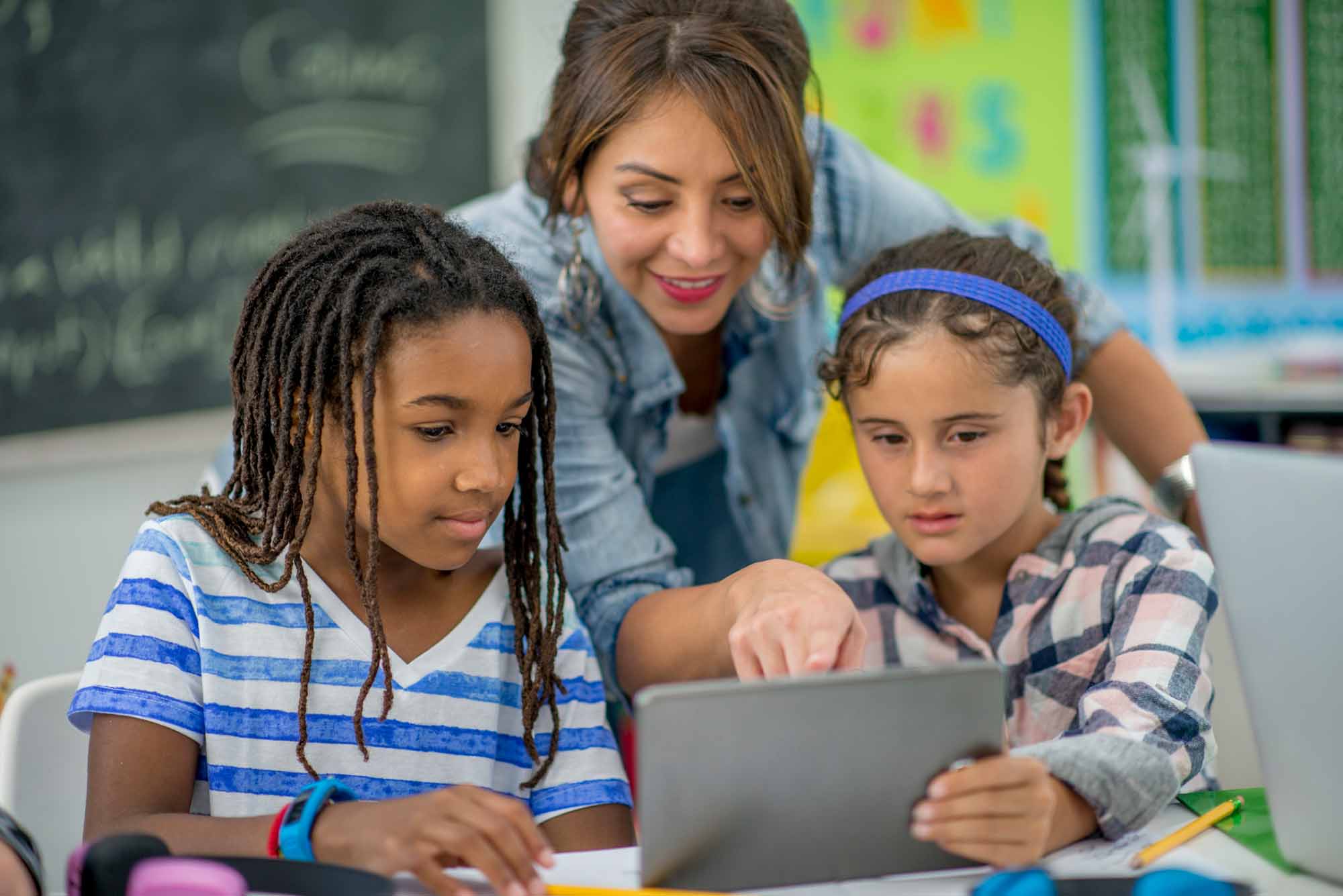Developing and Piloting a Psychology of Social Media Course
 In her 2012 TED talk Connected, but Alone?, psychological scientist Sherry Turkle said, “We’re smitten with technology. And we’re afraid, like young lovers, that too much talking might spoil the romance. But it’s time to talk.”
In her 2012 TED talk Connected, but Alone?, psychological scientist Sherry Turkle said, “We’re smitten with technology. And we’re afraid, like young lovers, that too much talking might spoil the romance. But it’s time to talk.”
How do we, as educators of psychological science, get this conversation started for our students?
For me, the answer was developing and piloting an undergraduate Psychology of Social Media course this year. The course was dedicated to understanding some of the myriad ways that social media are changing how we think about, process, store, and retrieve information, as well as the ways social media affect individual relationships and society as a whole.
Given the enormity and the constantly evolving nature of the subject matter, there were some challenges organizing the course, and there was some rethinking of the kinds of classroom tools needed.
Challenge 1: What to Include (And What Not to Include)
If you are teaching a course about the psychological effects of social media in the information age, you’ll have to make some important decisions about how to organize the course, what to include, and what not to include. Since this is an interdisciplinary topic, I chose to format my course using the following six themes:
- Historical context of social media,
- The information age and digital revolution,
- Social media as an amplifier of positive/prosocial behaviors,
- Social media as an amplifier of negative/antisocial behaviors,
- Social media in marketing and branding, and
- Social media in education.
Depending on your experience and expertise, you may address different themes, but the key is to choose where you’ll direct your students’ focus.
My course material included news articles, YouTube videos, TED talks, blogs, opinion pieces, viral content (videos, memes, posts, etc.), and some peer-reviewed research on social media and its psychological effects. We also read excerpts of David Weinberger’s Everything Is Miscellaneous to highlight the information age and digital revolution; Clay Shirky’s Here Comes Everybody to introduce how social media can amplify prosocial behaviors; and Wael Ghonim’s Revolution 2.0 as a case study of social media playing a role in influencing, catalyzing, and facilitating positive social change during Egypt’s 2011 revolution. These resources are certainly not comprehensive, but they were good springboards for facilitating thought and discussion about the topics of the course.
Challenge 2: Keeping It Real
Another challenge you’ll probably face is making the course an engaging, authentic learning experience for the digital natives enrolled. In other words, we need to keep it “real” and ensure the course and content are relevant to the ever-changing landscapes of social media in our students’ own experience. One way to address this challenge is to situate as much of the course content as possible within social media environments. Each of my students was required to create a blog, join a secret Facebook group with classmates, sign up for Twitter, and begin using a social media tool they had never used before. Weekly assignments included reflection blog posts, posting and commenting on posts in the Facebook group, and tweeting using the course hashtag: #psychsocialmedia. There were two major term assignments. One consisted of small group presentations in which students taught the class about Facebook, Twitter, Pinterest, YouTube, and Instagram within the contexts of the six themes of the course. The other assignment was a term paper about students’ experiences with their new social media tools.
It is also important for our students to experience social media in its natural settings, which means you’ll often be sharing and discussing information from unvetted blog posts, YouTube videos, or news articles. In this way, you can use social media sources (of varying degrees of credibility, validity, and accuracy) in class to help your students learn to make sense of the information overload that they encounter daily. As Beth Morling highlighted in the April 2014 Observer, you can help your students become better critical consumers of research by having them read and analyze examples of secondhand research information that they regularly encounter in real-world settings. You’ll need to emphasize that inclusion of content doesn’t mean you’re endorsing that content, especially since you can provide a multitude of differing viewpoints to discuss in class.
Challenge 3: Innovations Are Outpacing Research
Teaching a psychology course about social media can pose another challenge because technologies (and technologies’ potential uses and impacts) have often changed by the time empirical research is published. This challenge can be compounded when empirical studies (and the social media headlines about that research) are contradictory. For example, recent research from Princeton University suggests Facebook will lose 80% of its users by 2017, while research from Carnegie Mellon University suggests that Facebook is probably here to stay.
Much of the available information about social media comes from sources not based on scientific research, yet there is much important information in the mix. As more information becomes available from increasing numbers of sources with varying degrees of credibility, it becomes even more important to educate citizens to become critical consumers of that information. Yet it is the very nature of social media, which gives voice to anyone and everyone, that is creating this overabundance and limited validity of information. That situation is truly fascinating.
One way to address this challenge is to compare and contrast the relatively few peer-reviewed empirical research reports available with the vast numbers of social media headlines and articles about the topics addressed in that research. For example, the “Good Judgment Project” (www.goodjudgmentproject.com) at the US government’s Intelligence Advanced Research Projects Activity is engaged in cutting-edge research on crowdsourcing as a tool for forecasting geopolitical events. But official preliminary results have just been published 3 years into the project. Additionally, the narrow scope of the research doesn’t address the many other ways that the prosocial behavior of crowdsourcing is being facilitated via social media. An adequate coverage of this topic requires going beyond what is available via peer-reviewed journals. Excellent additional resources could include media coverage of
- crowdsourcing via Twitter after the Boston Marathon bombing;
- the massive online efforts in search of Malaysia airline’s missing flight 370; and
- the role of Facebook in the recent reunion the of the “Burger King baby” (Katheryn Deprill, who was abandoned by her mother in a Burger King bathroom in 1986) with her birth mother.
These kinds of current stories, often broken to the public via social media outlets, are invaluable to discussion of the psychological effects of social media, even if scientific research hasn’t caught up with the phenomenon.
Another topic that can’t be adequately covered without both empirical research and anecdotal media stories is digital altruism. Dana Klisanin has conducted groundbreaking psychological research on digital altruism. She suggests that the Internet is giving rise to new kinds of altruism and that the “cyberhero” archetype has emerged from these new types of digital altruism. But her research is also still emerging. A discussion of her research can be significantly augmented by inclusion of real-world, real-time examples of digital altruism (found on websites like Kiva.com, Change.org, or GoFundMe.com) and cyberheroism (such as the combined efforts of social media users to help the Make-a-Wish Foundation grant the wish of young cancer survivor Miles Scott to become #Batkid and “save” San Francisco in a series of staged events throughout the city, or the countless viral videos of good Samaritans that tend to help people feel better about humanity as a whole).
Your future Psychology of Social Media course has the potential to facilitate deep thinking and discussions about social media. If you tackle the challenges addressed in this article, a course on social media can be a rewarding experience for both you and your students.
References
Cannarella, J., & Spechler, J. A. A. (2014). Epidemiological modeling of online social network dynamics. arXiv preprint arXiv:1401.4208.
Carnegie Mellon University (2014, February 7). Is Facebook here to stay? Computer model says ‘probably.’ Futurity. Retrieved from http://www.futurity.org/facebook-stay-computer-model-says-probably/
Garside, J. (2014, January 22). Facebook will lose 80% of users by 2017, say Princeton researchers: Forecast of social network’s impending doom comes from comparing its growth curve to that of an infectious disease. The Guardian. Retrieved from http://www.theguardian.com/technology/2014/jan/22/facebook-princeton-researchers-infectious-disease
Ghonim, W. (2012). Revolution 2.0: The power of the people is greater than the people in power: A memoir. New York: Houghton Mifflin Harcourt.
Klisanin, D. (2011). Is the Internet giving rise to new forms of altruism? Media Psychology Review [Online]. Retrieved from http://mprcenter.org/review/internetdigitalaltruism/
Klisanin, D. (2012). The hero and the Internet: Exploring the emergence of the cyberhero archetype. Media Psychology Review [Online]. Retrieved from http://mprcenter.org/review/cyberheroes2/
Mellers, B., Ungar, L., Baron, J., Ramos, J., Gurcay, B., Fincher, K. … Tetlock, P. E. (2014) Psychological strategies for winning as geopolitical forecasting tournament. Psychological Science, 25(5), 1106–1115.
Morling, B. (2014). Guide your students to become better research consumers. Observer, 27(4). Retrieved from http://www.psychologicalscience.org/index.php/publications/observer/2014/april-14/teach-your-students-to-be-better-consumers.html
Ribeiro, B. (2014, April). Modeling and predicting the growth and death of membership-based websites. In Proceedings of the 23rd international conference on World Wide Web (pp. 653–664). International World Wide Web Conferences Steering Committee.
Shirky, C. (2008). Here comes everybody: The power of organizing without organizations. New York: Penguin Press.
Turkle, S. A. (2012). Connected, but alone? [Video file]. Retrieved from http://www.ted.com/talks/sherry_turkle_alone_together
Weinberger, D. (2007). Everything is miscellaneous: The power of the new digital disorder. New York: Times Books.





Comments
So interesting! Could you post a link to your syllabus so I can steal from it? Thanks!
Thank you…for this insightful idea to study ‘Social Media’ as an under grad course.
For a start, personally, the term Social Media should be examined thoroughly because in human terms, it is anything BUT social. I would coin the term ‘Inter Media’, still denoting the fact that it is media but not social. As humans we are tactile creatures with the developed sense of touch, smell, taste, auditory-tone of voice (which could be used when using Voip). A slight dichotomy.
Inter Media has developed and established a new society, called Deleter’s. No need to make an effort anymore, just delete and move on. But are we really moving on? Is this progress or are we just shifting the social paradigm?
APS regularly opens certain online articles for discussion on our website. Effective February 2021, you must be a logged-in APS member to post comments. By posting a comment, you agree to our Community Guidelines and the display of your profile information, including your name and affiliation. Any opinions, findings, conclusions, or recommendations present in article comments are those of the writers and do not necessarily reflect the views of APS or the article’s author. For more information, please see our Community Guidelines.
Please login with your APS account to comment.